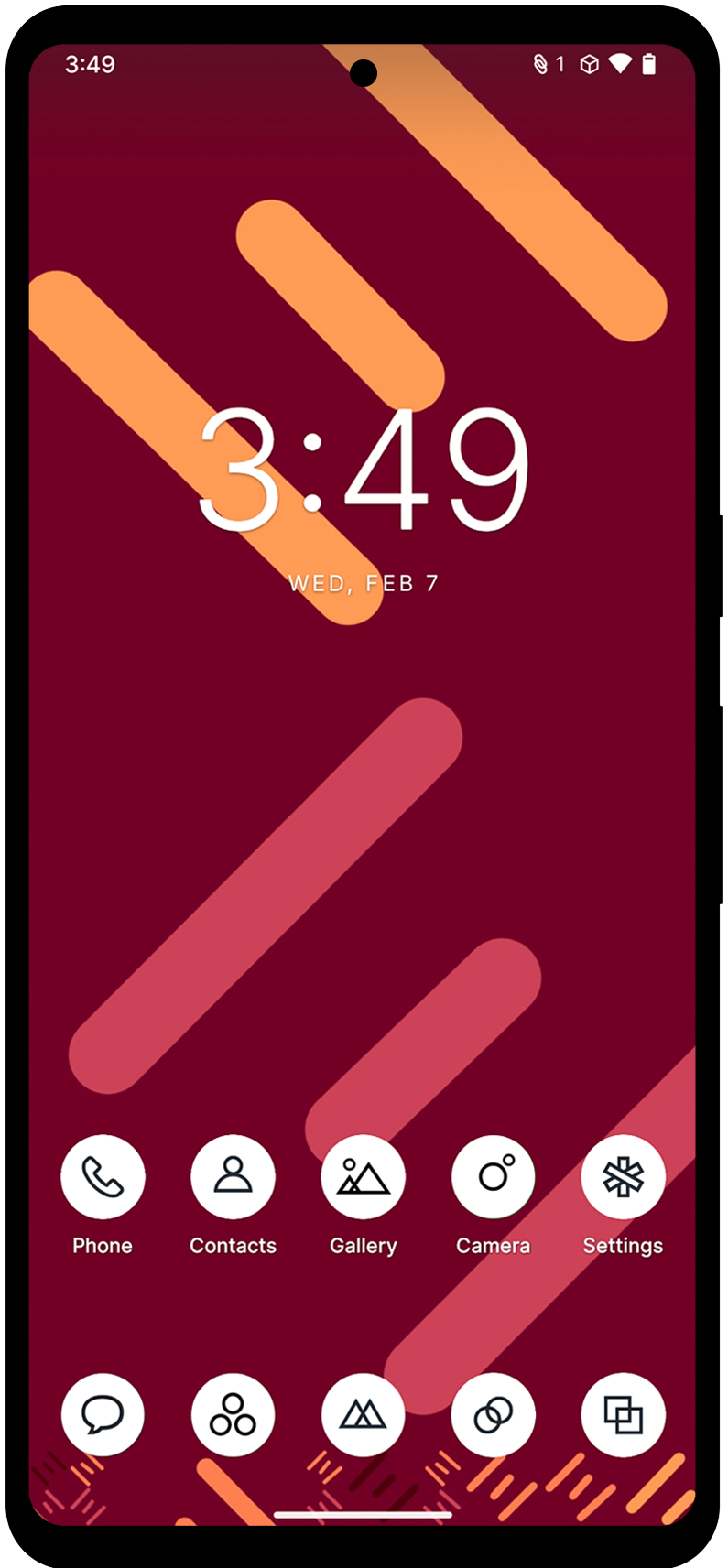ethOS Whitepaper
Intro
Web3 remakes the internet with a native payment protocol. There are no gatekeepers or intermediaries in Web3. Because of the composability of Ethereum applications, developers permissionlessly leverage existing apps resulting in an exponential rate of development.
Web3 has kickstarted a technological, economic, and cultural revolution; however a critical component is missing. To allow developers to fully realize the potential on Web3, a native mobile OS for Ethereum is needed. One that is free and open source with a native blockchain API.
Decentralization matters
Google’s Android and Apple’s iOS cannot successfully serve Web3 because they are permission-ed platforms by design. Centralized platforms cannot grant permissions to new applications fast enough, and with every delay, restriction, or fee, they break the promise and potential of Web3.
Today, dapps on mobile devices today are second-class citizens. Buried inside wallet browsers (e.g. the browser inside Coinbase Wallet or Metamask), users must find the right URLs for the dapp web apps and then navigate there themselves. Even when shortcuts to dapps can be shown (easier on Android than iOS due to strict Apple rules), they are buried inside a layer instead of being available on the device’s home page like other Web2 apps.
Hello, ethOS
Web3 must meet the minimum user experience that Web2 has set. Unfortunately, Web2 has created centralized walled gardens that prevent Web3 from achieving its potential. ethOS is a new paradigm in mobile OS, where the underlying system layer is decentralized and can be governed by the community.
ethOS will be the ultimate tool for the creators and explorers of Web3. Until we have a mobile OS that is as permissionless as the blockchain on which Web3 is built, the technological transformation will be incomplete, and the economic and cultural renaissance that Web3 makes possible, will be delayed.
Android as the base
Creating ethOS from scratch would be a technically challenging and time consuming task. On the other hand, building on top of a popular Android fork allows for focusing on blockchain specific features, and expanding Android only where necessary.
GrapheneOS serves as the base OS. GrapheneOS is the most used Android fork that is stripped of Google-specific features, which makes it suitable from a security and privacy perspective. GrapheneOS is open source and it supports most Android phones.

Blockchain support
ethOS runs a light Ethereum client as a system service, which means it doesn’t store all blockchain data, but it verifies all blocks for itself.
An onboard Ethereum client brings a layer of abstraction and simplify in-app setup, as developers may simply connect to a local JSON-RPC API from their apps, and not worry about the downstream infrastructure. Furthermore, ethOS users do not need to rely upon a third party service (like Infura or Alchemy) to interact with the Ethereum blockchain.
With advances in storage capacity, moving to a full node setup will become a feasible option, which will allow for a truly decentralized OS. Furthermore, each ethOS device will improve the decentralization of Ethereum itself.
Wallet as a first-class citizen
ethOS will feature robust wallet support. The goal is to enable a crypto-ready experience from the moment the phone gets turned on the first time.
In addition to a built-in wallet that will come handy for crypto novices, ethOS will support some of the more popular wallets as well. Private keys will be hardware encrypted and stored, using the device’s built-in security chip, whenever possible. Connecting 3rd party wallets will be achieved through a dedicated protocol, where signature authorization will be deferred to the originating wallet.
Abstracting away the wallet will allow app developers to focus more on the in-app functionality and less on the web3 infrastructure itself.
Decentralized browsing
Running a local node along with built-in wallet support will unlock many interesting use cases when it comes to the browser, from seamlessly connecting apps to injecting identity into the browsing session.
Additionally, the built in browser will come with IPFS and .eth domain support, which will allow for further content decentralization.
ΞPhone as the end goal
Initially, users will be able to flash their devices and test ethOS themselves on a few specific devices (Pixel 3 and Pixel 5a). After ethOS becomes stable enough, we will start working on a dedicated hardware device called the Ethereum Phone (ΞPhone).
The ΞPhone will enable novel economics and experiences. Apps, ERC20s, and NFTs will expand in potential when paired with the geolocation, camera, and near-field communication capabilities of mobile. New social and creative experiences will become possible, and will integrate seamlessly with the tokenization and financial-ization of the physical and digital worlds and experiences.
Appendix
Crypto adoption is currently going at the same rate as the early internet adoption
https://twitter.com/TheCryptoLark/status/1471730881337323522?s=20
Web3 adoption is just starting but without the right infrastructure layer, will take up till ~2027 to hit 1 Billion users. We think that is too slow!
https://twitter.com/TaschaLabs/status/1470121310189588484?s=20
If we can bring crypto natively to mobile devices, we can change the slope of this growth curve
https://twitter.com/TaschaLabs/status/1470121312576147456?s=20
Updated almost 2 years ago
